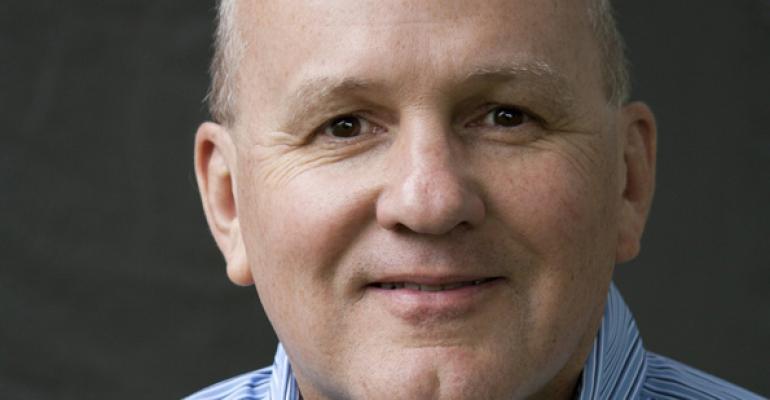 As AV professionals, it’s our job to make your job easier. That means the moment you hire our team to bring your event to life, our crew has to be ready to jump into action, cables, cords, switchers in hand—whatever it takes—to ensure that your event goes off without so much as an unplanned hiccup.
As AV professionals, it’s our job to make your job easier. That means the moment you hire our team to bring your event to life, our crew has to be ready to jump into action, cables, cords, switchers in hand—whatever it takes—to ensure that your event goes off without so much as an unplanned hiccup.
One of the things I find even the most experienced event planners don’t quite understand and is sometimes a source of frustration for both parties—is who beyond the AV team’s key players that you’re interacting with on a daily basis (i.e., the “PM” and “TD”—more on them below) is actually running the show?
You know what I mean? At every event, there’s bound to be tool-belted, gaffer-taped, cord-covered crew members running around and judiciously doing their duties—whatever those duties are. And believe me, there are a lot of them.
Below, I’ve tried to demystify and outline some of the job duties and responsibilities of the overall "team" that’s likely to be manning the floor during your event or conference. I’ve found that once most planners get a handle on the roles and responsibilities of the entire AV team, they’re likely to feel far less stressed and/or overwhelmed as their event plays out.
PROJECT MANAGER If you’ve ever run an event, expo or conference, it’s likely you’ve worked with a Project Manager (PM). The PM is your day-to-day contact and go-to person on-site for any issues or questions during the event. This person will work hand-in-hand with you to work out every kink, overcome any obstacle, and plan every moment of your event in the days, weeks and months leading up to your event. The PM is your direct conduit to the other AV elements of the event (sound, lighting, cameras, digital displays, projection, etc.). The PM is your main point of contact both before and during the event—and if you don’t have them on speed dial by the time you start your event planning—it’s a good bet you will by the time it’s over.
TECHNICAL DIRECTOR After the PM, the next AV team member who's crucial to staging a flawless event is the Technical Director (TD). This person is responsible for managing the flow of the event. Typically the TD will “call” the show, meaning they will speak via intercom to the crew from beginning to end. In most cases, the TD is the person sitting in the center of the production area with a variety of monitors in front of them, running the whole shebang like the wizard from The Wizard of Oz.
VIDEO ENGINEER Depending on the kind of feed that’s being broadcast, an AV team might have one or more experienced video engineers making sure that whatever’s being recorded or displayed is being broadcast using state-of-the-art projectors and cameras. In today’s technologically-demanding times, what’s happening at your conference will likely be archived, live-streamed or captured in snippets, so it’s crucial that your AV crew’s video team is using the best-quality equipment and the most up-to-date technologies.
LIGHTING DESIGNER/OPERATOR Attendees rarely think about lighting, but we AV professionals obsess over it. As technology has improved, so have our lighting options. Incorporating mood lighting, LED instruments and programmed lighting has become more and more important to the overall look, feel and “staging” of an event. An experienced AV team will have well-trained, experienced crew members dedicated to making your event look every bit as great as it sounds.
AUDIO ENGINEER Ever been to an event with a mic that kept fading in or out, or a giant speaker that sounded so static-y it might as well have been transmitting Morse code? There’s nothing worse. That’s why having a top-notch audio engineer is so vital. Whether your event is being broadcast to a few hundred or a few thousand people, the audio engineer ensures everything sounds good from the get-go and is flawless throughout your event.
ADDITIONAL ROLES Depending on the size and complexity of the production, an AV team may also include design engineers, creative specialists, set designers, additional lighting technicians, audio technicians, editors, riggers—you name a job, we’ve got a technician for it.
As the saying goes, you don’t get “do-overs” in the live events staging industry. That’s why I strongly believe that the more communication and understanding event planners have about their AV teams and the roles their technicians fulfill during the event, the better their events will be, every time, without fail.
Bob Daniels is president of The Rental and Staging Network, an association established in 2007 as a network of best-in-the-business, live event staging companies. RSN members’ expertise ranges from meetings and conventions to live concerts, broadcasts and special events. The organization’s code of ethics requires RSN members to conduct business with honesty, fairness, responsibility, integrity and sound business judgment. For more information, visit www.rentalandstaging.net.


